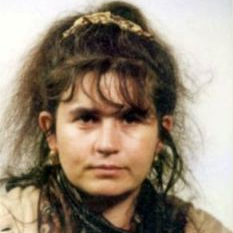Advances in Infrared Observation of Earth's Atmosphere
A special issue of Remote Sensing (ISSN 2072-4292). This special issue belongs to the section "Atmospheric Remote Sensing".
Deadline for manuscript submissions: closed (30 June 2022) | Viewed by 25549
Special Issue Editors
Interests: cloud remote sensing; cloud radiative forcing; cloud detection and classification; cloud microphysical properties; surface solar irradiance
Special Issues, Collections and Topics in MDPI journals
Interests: satellite-data handling for meteorological studies with particular focus on cloud detection and classification
Special Issues, Collections and Topics in MDPI journals
Special Issue Information
Dear Colleagues,
Remote sensing is an essential tool for the study of the climate system by measuring the electromagnetic radiation emitted or reflected by the atmosphere and by surfaces. Remote sensing, especially in infrared, has boomed over the past few years. This is the result of constant technical and technological developments, including space missions, which require the quality and reliability of satellite platforms and the measuring instruments they carry. In the last half-century, observing system improvements have been driven by the increasing demands for higher-resolution data for numerical models and the need for long-term measurements and global coverage. This has resulted in a growing demand for data access and the integration of data from an increasingly wide variety of observing system types and networks, as well as for atmospheric observations from satellite platforms. With the increase in observations, there was an improvement in the quantification of climatic variables (greenhouse gases, clouds, and aerosols), weather variables (water vapor, temperature, wind, and cloud cover), and in monitoring air quality (particulate and gaseous pollution) or atmospheric chemistry (trace gases).
The Special Issue will present recent results in Advanced Infrared Observation of Earth's Atmosphere, including innovative applications for meteorology, climatology and atmospheric physics, and validation of retrievals based on independent measurements.
Dr. Filomena Romano
Dr. Elisabetta Ricciardelli
Guest Editors
Manuscript Submission Information
Manuscripts should be submitted online at www.mdpi.com by registering and logging in to this website. Once you are registered, click here to go to the submission form. Manuscripts can be submitted until the deadline. All submissions that pass pre-check are peer-reviewed. Accepted papers will be published continuously in the journal (as soon as accepted) and will be listed together on the special issue website. Research articles, review articles as well as short communications are invited. For planned papers, a title and short abstract (about 100 words) can be sent to the Editorial Office for announcement on this website.
Submitted manuscripts should not have been published previously, nor be under consideration for publication elsewhere (except conference proceedings papers). All manuscripts are thoroughly refereed through a single-blind peer-review process. A guide for authors and other relevant information for submission of manuscripts is available on the Instructions for Authors page. Remote Sensing is an international peer-reviewed open access semimonthly journal published by MDPI.
Please visit the Instructions for Authors page before submitting a manuscript. The Article Processing Charge (APC) for publication in this open access journal is 2700 CHF (Swiss Francs). Submitted papers should be well formatted and use good English. Authors may use MDPI's English editing service prior to publication or during author revisions.
Keywords
- Infrared Observation
- Atmosphere
- Aerosol
- Clouds
- Greenhouse gases
- Water vapor profiles
- Temperature
- Monitoring air quality
- Atmospheric chemistry






